1. The Super Bowl Halftime Show
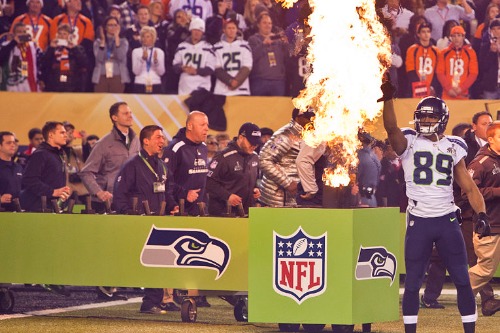
Believe it or not, the Super Bowl halftime show was never supposed to be a big deal, Bonnie Berkowitz and Lazaro Gamio from The Washington Post explain. In the early days of the championship, halftime was just a break, featuring marching bands or local performers. But in 1993, everything changed when Michael Jackson performed, drawing record-breaking viewers and making the halftime show just as important as the game itself. After that, the NFL realized it could turn this “break” into a full-on entertainment spectacle.
Now, the halftime show is one of the most anticipated TV events of the year, sometimes even overshadowing the actual football game. Artists like Beyoncé, Prince, and Rihanna have made history with their performances, and millions of people tune in just for the show. It’s wild to think that what started as filler entertainment has become a must-watch cultural moment. The unintended evolution of the Super Bowl halftime show proves that sometimes the best traditions come from happy accidents.
2. The Presidential Turkey Pardon
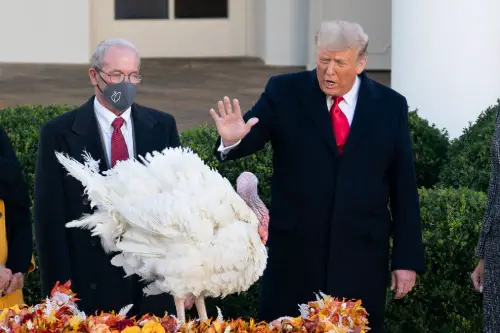
Every year, the President of the United States pardons a turkey before Thanksgiving, but this wasn’t always a planned tradition, according to Emily Hung from CBS News. The idea reportedly started when President Abraham Lincoln’s son, Tad, begged his father to spare a turkey that was meant for Christmas dinner. Later, in 1947, the National Turkey Federation began gifting turkeys to the White House, and some presidents started letting them live instead of eating them. However, it wasn’t until 1989, under President George H.W. Bush, that the turkey pardon became an official event.
Now, it’s a lighthearted tradition that marks the beginning of the holiday season. Americans tune in to watch the president make jokes while granting a bird its freedom, even though no one ever really planned for this to happen. The pardoned turkeys often go on to live at farms or historical sites, becoming minor celebrities in their own right. What started as a child’s plea to save a single turkey has become an annual presidential ritual.
3. Black Friday Shopping Frenzy

Black Friday wasn’t originally meant to be the chaotic, deal-hunting tradition it is today, according to Steven Poole from The Guardian. The term was first used by Philadelphia police in the 1950s to describe the heavy post-Thanksgiving traffic and crowded stores—not in a positive way. Retailers later spun it into a shopping event, and by the 1980s, stores started promoting big sales on that day, claiming it was when they went “into the black” financially. What started as a headache for police turned into the biggest shopping day of the year.
Now, people camp out for hours, fight over discounted TVs, and treat Black Friday as an event in itself. Some stores even open on Thanksgiving night, blending two holidays into one giant consumer spectacle. The madness has gotten so extreme that viral videos of stampeding shoppers have become a holiday tradition of their own. It’s a perfect example of how something that started as an unintended consequence can evolve into an ingrained custom.
4. The “Happy Birthday” Song at Restaurants

If you’ve ever had a birthday dinner at a chain restaurant, you’ve probably noticed that the staff never sings the traditional “Happy Birthday” song. That’s because the song was copyrighted for decades, meaning restaurants would have to pay royalties to use it. To avoid that, restaurants started making up their own unique birthday songs, creating an unexpected but widespread tradition. This accidental workaround led to every chain having its own version, with clapping, hand motions, and even tambourines.
For years, customers just assumed the alternate birthday songs were a fun branding choice. In reality, they were a legal loophole that became a standard practice in the restaurant industry. The copyright on “Happy Birthday” was finally lifted in 2016, but by then, the quirky restaurant songs had already become part of American culture. What started as a legal necessity turned into a fun, if slightly awkward, birthday tradition.
5. Daylight Saving Time

Daylight Saving Time wasn’t originally designed to be a permanent tradition, according to Cara Tabachnick from CBS News. It was first introduced during World War I as a way to conserve fuel by maximizing daylight hours. The practice was abandoned after the war, then revived during World War II, and later made official in the 1960s. It was never really meant to be a long-term solution, but once people got used to it, the habit stuck.
Today, the twice-a-year clock change is something Americans love to debate. Some states, like Arizona and Hawaii, have opted out altogether, while others still struggle with the time shift’s effects on sleep schedules and daily routines. Many people don’t even know why they’re still doing it, but the tradition persists out of habit. What started as a temporary wartime measure has become one of the most controversial customs in the country.
6. The QWERTY Keyboard Layout

The standard keyboard layout we all use today wasn’t designed because it was the most efficient—it actually started as a compromise. Early typewriters jammed easily, so the QWERTY layout was created in the 1870s to slow down typing and reduce jams. Once people got used to it, businesses and schools started teaching it as the standard, even after better typewriters made the original issue irrelevant. Other keyboard layouts, like Dvorak, are actually faster, but by then, the QWERTY system was too ingrained to change.
Now, even though there’s no longer a mechanical reason for using QWERTY, it remains the default keyboard setup worldwide. Millions of people type this way every day without realizing that it was originally designed to slow them down. The sheer power of habit has kept it in place, despite alternatives that could potentially make typing faster and easier. It’s a prime example of an accidental choice becoming a lasting tradition.
7. The Hot Dog Eating Contest on July 4th
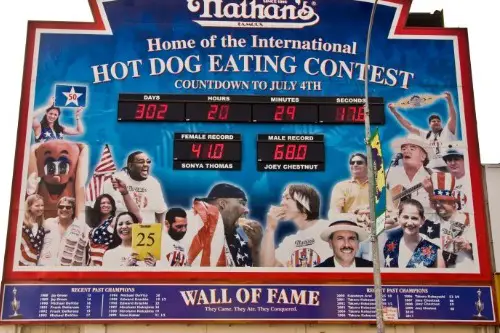
The famous Nathan’s Hot Dog Eating Contest, held every Fourth of July, started as nothing more than a marketing gimmick. The story goes that it began in 1916 when a group of friends allegedly held an impromptu contest to see who was the most “American” by eating the most hot dogs. There’s no real proof this actually happened, but Nathan’s ran with the story and turned it into an annual event. Over time, it grew into a major spectacle, drawing competitive eaters from all over the world.
Today, it’s a nationally televised event, featuring competitors like Joey Chestnut devouring dozens of hot dogs in minutes. What started as either a casual bet or a clever marketing stunt has become one of the most famous July 4th traditions in America. It’s proof that sometimes a small, seemingly random idea can take on a life of its own. Now, competitive eating is a sport in its own right, and Nathan’s Hot Dog Eating Contest is its Super Bowl.
8. Accidental Doodle on Starbucks Cups
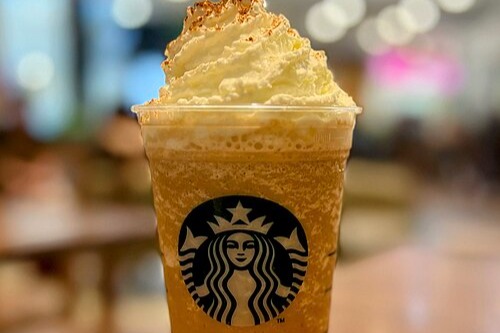
If you’ve ever gotten a coffee at Starbucks and noticed a little smiley face or doodle on your cup, you might think it’s part of the company’s branding. But the practice actually started by accident—baristas would scribble on cups to differentiate drinks during busy shifts. Eventually, they started adding little messages or drawings to make customers’ experiences more personal. When customers responded positively, the habit stuck and became an unofficial part of Starbucks culture.
Now, many people expect their cups to come with a little extra touch, and Starbucks employees often get creative with their drawings. Some customers even collect cups with special messages or artistic sketches. What started as a simple way to avoid mix-ups turned into a signature part of the Starbucks experience. It’s a small but meaningful reminder of how tiny, unintended actions can become beloved customs.
9. The Phrase “OK”

Believe it or not, the word “OK” started as a joke in the 1830s. It came from a trend in Boston newspapers where writers would intentionally misspell phrases and abbreviate them—”OK” was short for “oll korrect,” a playful way of saying “all correct.” The joke faded, but the phrase stuck around and gained popularity when it was used in political campaigns, particularly during Martin Van Buren’s presidential run. By the time people stopped caring about the joke, “OK” had already become a widely accepted term.
Now, it’s one of the most recognized words in the world, used in nearly every language. Most people don’t realize they’re using a 19th-century newspaper joke every time they text “OK” or hit the “OK” button on a computer. What started as a silly bit of wordplay became a permanent part of the English language. It’s proof that even the most random trends can turn into lasting traditions.
10. Saying “Bless You” After a Sneeze

Most people assume that saying “bless you” after someone sneezes has a religious origin, but the practice actually started because of a widespread misunderstanding. During the bubonic plague in the 6th century, sneezing was considered a symptom of impending illness, and Pope Gregory I encouraged people to say “God bless you” as a form of protection. The phrase stuck around and eventually made its way into American culture, even though the original fear behind it faded. Over time, it became a social expectation rather than a serious plea for divine intervention.
Now, saying “bless you” is just polite, and not saying it can make things awkward. Some people feel uncomfortable if no one acknowledges their sneeze, even though there’s no actual reason to. It’s a tradition that continues purely out of habit, long after the plague stopped being a daily concern. What began as an attempt to ward off sickness is now just another everyday courtesy.
11. Wedding Ring Placement on the Left Hand
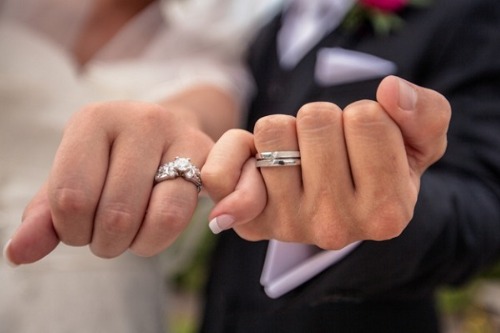
Most Americans wear their wedding rings on the fourth finger of the left hand, but this tradition was based on an old, incorrect belief. Ancient Romans thought that a vein—called the “vena amoris” or “vein of love”—ran directly from that finger to the heart. Even though modern science has debunked this idea, the tradition stuck, and wedding rings continue to be worn on the left hand in most Western countries. Over time, the practice became a symbol of commitment rather than a reflection of anatomy.
Now, almost no one questions why the left hand is the default for wedding rings. It’s just one of those customs that people follow without thinking, even though the original reasoning doesn’t hold up. Some cultures and countries actually wear wedding rings on the right hand, proving that this is more of an arbitrary tradition than a universal rule. What started as a medical misunderstanding turned into a romantic symbol that millions of people follow today.
12. The Pledge of Allegiance in Schools
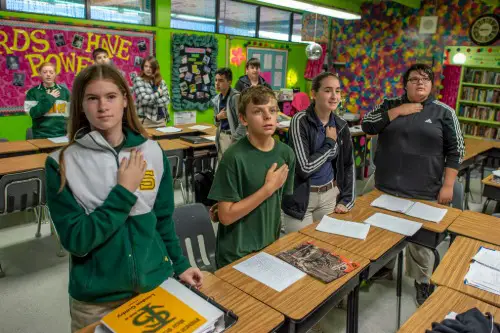
Reciting the Pledge of Allegiance in American schools wasn’t something that started with the founding of the country—it was actually a marketing campaign. In 1892, a magazine called The Youth’s Companion created the pledge to promote patriotism and, more importantly, to sell American flags to schools. The pledge quickly caught on, and by the 1920s, schools across the country were reciting it daily. Over time, it became a deeply ingrained tradition, even though its original purpose was tied to a business scheme.
Now, millions of students say the pledge every morning without realizing its commercial origins. The wording has changed over time, with “under God” being added in the 1950s during the Cold War. Though some schools have made it optional, the tradition remains a fixture in many classrooms. What started as a flag-selling tactic has become one of the most well-known patriotic customs in America.


